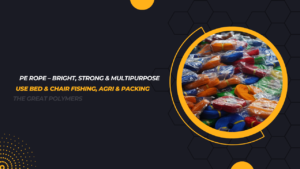Introduction
Container loading is a critical process in logistics and shipping, ensuring that goods are securely packed and transported to their destination. In this article, we will explore the container loading process, focusing on the use of PE nylon rope, PP rope, and PE fishing twine for loading cargo bound for Africa.
Importance of Proper Loading Techniques
Efficient loading techniques are essential to prevent damage to goods during transit. Improper loading can lead to shifting of cargo, breakage, and even loss of products. By using appropriate ropes and following loading protocols, the risk of damage is significantly reduced.
Types of Ropes Used in Container Loading
PE Nylon Rope
PE nylon rope is a popular choice for container loading due to its strength, durability, and resistance to abrasion. It is capable of withstanding heavy loads and offers excellent stability during transit.
PP Rope
PP rope, made from polypropylene, is lightweight yet strong, making it ideal for securing cargo in containers. Its resistance to chemicals and UV rays ensures longevity, even in harsh environmental conditions.
PE Fishing Twine
PE fishing twine is a thin, yet robust rope commonly used for securing smaller items within containers. Its high tensile strength and resistance to moisture make it suitable for various loading applications.

Characteristics of Each Type of Rope
PE nylon rope:
- High tensile strength
- Abrasion resistance
- Excellent stability
PP rope:
- Lightweight
- Chemical and UV resistance
- Durable
PE fishing twine:
- Thin yet strong
- High tensile strength
- Moisture resistance
Advantages of Using Ropes in Container Loading
- Enhanced cargo security
- Prevention of shifting and damage
- Cost-effective solution
- Versatility in securing different types of cargo
Challenges in Container Loading Process
- Limited space within containers
- Ensuring even weight distribution
- Compliance with safety regulations
Step-by-Step Guide to Container Loading Process
- Preparing the Container: Clean and inspect the container for any damages. Ensure it is properly ventilated and free from moisture.
- Securing the Cargo: Place heavier items at the bottom and lighter ones on top. Use dunnage to create separation and prevent movement.
- Using Ropes Effectively: Utilize PE nylon rope, PP rope, or PE fishing twine to secure the cargo tightly. Tie knots at regular intervals to maintain tension.
Safety Measures During Loading Process
- Wear appropriate protective gear, such as gloves and safety goggles.
- Use caution when handling heavy items and sharp objects.
- Follow proper lifting techniques to avoid injury.
Tips for Efficient Container Loading
- Plan the loading process in advance to optimize space.
- Utilize pallets and containers to organize and stack goods efficiently.
- Double-check all securing mechanisms before sealing the container.
Case Studies Illustrating Successful Container Loading
- Case Study 1: Efficient loading of perishable goods for export
- Case Study 2: Secure transportation of fragile electronics
Benefits of Optimized Container Loading
Optimizing the container loading process offers a myriad of benefits for businesses shipping to Africa:
- Reduced Risk of Damage: Securely fastened cargo minimizes the risk of damage during transit, ensuring goods arrive at their destination intact.
- Increased Efficiency: Streamlining the loading process reduces turnaround time, allowing businesses to meet tight deadlines and customer demands effectively.
- Cost Savings: By maximizing space utilization and minimizing cargo damage, businesses can lower shipping costs and improve overall profitability.
- Enhanced Reputation: Consistently delivering goods on time and in pristine condition enhances the reputation of businesses, fostering trust and loyalty among customers.
Conclusion
Effective container loading is vital for the safe and timely delivery of goods. By understanding the different types of ropes available and following proper loading techniques, businesses can minimize the risk of damage and ensure customer satisfaction.
FAQs
- What are the benefits of using PE nylon rope in container loading?
- How can I ensure even weight distribution within the container?
- Are there any regulations regarding container loading?
- What should I do if I encounter damaged cargo during loading?
- Can I reuse ropes for multiple shipments?
40 FEET CONTAINER LOADING PROCESS PE NYLON ROPE, PP ROPE & PE FISHING TWINE FOR AFRICA










Leave a reply